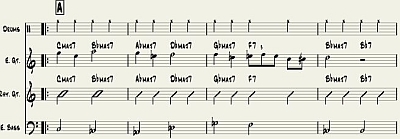

|
Player's Journal 2015 2014 2013 2012 2011 2010 2009 2008 2007 2006 2005 2004 2003 2002 12/03/2014 Thanksgiving Hit 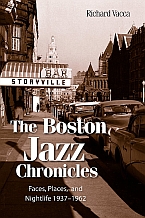
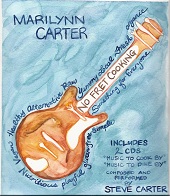
I got a heartwarming email the other day from Richard Vacca, author of the excellent Boston Jazz Chronicles. He had taken my "Music to Cook By" and "Music to Dine By" CDs to Thanksgiving dinner. Hi Steve, Thought you might get a chuckle out of this. I had Thanksgiving dinner with friends, one of whom teaches at Berklee. He requested we bring "food or thanksgiving oriented music" for the CD player. This couple also invites students who can't get home for the holiday or hail from distant places, so there was a Korean couple (the guy being a guitar major), a singer from Austria, a drummer from Chicago, and a couple others. Of course No Fret provided two CDs of perfect music. Food oriented? Check. Mellow sound to calm the last-minute pandemonium in the kitchen? Check. Guitar music for the Korean guy? Check. Berklee connection? Another check. Steve, you were a hit! 12/01/2014 Role of the Accompanist 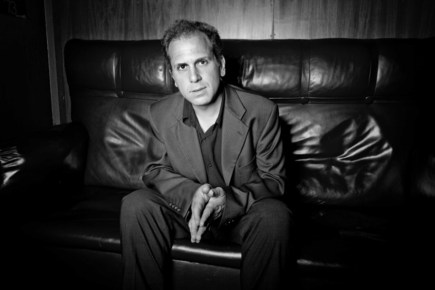
Pianist Larry Golding makes some good points in his posting " Artistís Choice: Larry Goldings on the Art of Accompaniment" I think nails it: ... I believe the role of an accompanist is no different than that of an arranger who has an orchestra at his or her disposal: to present the song and its singer/soloist in the best possible light. 10/19/2014 Foster's Interview 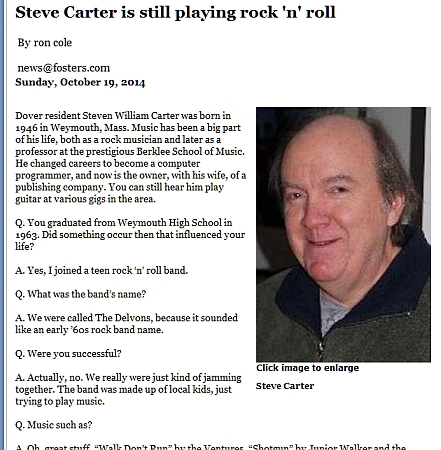
Ron Cole interviewed me for Foster's Daily Democrat here in Dover, NH. Brought back a lot of fond memories. 10/15/2014 Be My Guest Jan Lewis interviewed me on the Be My Guest TV show for Upton Community TV in Massachusetts. I performed a couple of my compositions on the show. 9/7/2014 Only Trust I love this tune, play it on almost every gig. I was interested to read in Gary Burton's autobiography about the origin of the tune. In 1964 Gary was playing with the Stan Getz quartet, not long after Getz/Gilberto was released. Astrud Gilberto had joined them on tour. To promote the record, we appeared in ... The Hanged Man, only the second made-for-TV movie, and well received at the time. It starred Edmund O'Brien, Vera Miles, Gene Raymond, Robert Culp, Edgar Bergan, and Norman Fell--all familiar movie or television personalities of the time--and had a large cast of extras. Our scene took place in a New Orleans club during Mardi Gras; we played while the principal characters plotted some gangland killing. In addition to the now-obligatory "Ipanema," we also did a new song commissioned for the movie, "Only Trust Your Heart," with music by Benny Carter and lyrics by Sammy Kahn. (In later years, I met both of them and was pleased to that each remembered me from the movie--quite unexpected, since at that stage in my career I was just one of the guys in Stan's band. Gary Burton. Learning to Listen, pp. 118f. 09/01/2014 Calculating  
Someone raised the question in an online forum about learning theory and learning to read. I wrote a quick response, and I felt that it was worth preserving: Steven wrote: "Give me a reason to take your advice." Fair question. Steven, I see from your tag line that you are into math and science. Your question reminded me of my own experience. In high school I had a chemistry class with Mr. Omera -- he went by the name of Jasper. Jasper told us "I don't memorize chemical formulas, because I know where I can look them up." When I went to college as a pre-med major, I took Organic Chemistry, and I learned the folly of Jasper's approach. Standing at a blackboard covered with diagrams of carbon, hydrogen, and oxygen molecules, I couldn't explain how chemicals interacted, because I had not sufficiently memorized the equations. The professor did not hesitate to embarrass me -- "Well, Mr. Carter. Just how do you propose to attach that carbon molecule? Are you going to dive into the test tube in scuba gear?" I dropped out of pre-med. But in music, it's the same. In the midst of improvising over a chord progression, I can not hesitate for an instant to calculate: let's see, I'm in E-flat and the root of the chord is C, the third is ..." Because by the time I've figured that out, not only has the chord gone by, but the tune is over, the band has packed up and gone home, and I'm standing on stage alone, still calculating. 07/31/2014 Protect Your Ears 
Don Puluse, talking about young music students: One thing that I'm absolutely certain of -- no matter how old they are, no matter what their experiences are -- I've seen them adjusting amplifiers, they play a gutar and they go for every nuance, they make mixes and they can hear the difference. They can raise 10k a dB or two and hear the difference. And I say: If you don't protect your ears, none of that's gonna matter in ten years. That I'm certain."" -- Stan Getz Library video 07/21/2014 Five Things 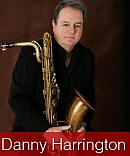
My friend Danny Harrington, a Berklee professor and Vandoren Artist, has written an excellent article on “5 Things Every Music Student Should Know.” I agree wholeheartedly with Danny’s views on this, and I’m glad he made such a conscise statement of an important issue. Please take a few minutes to read Danny's article before reading the rest of this journal entry, in which I add some of my thoughts. Danny writes: “Very few students have a command of this information; thus the initial problems begin.” When I was teaching Harmony 2 and Harmony 3 classes, students struggled because they didn’t have sufficient mastery of the fundamentals. The situation is even worse today. I told my students: You need to be able to think fast – so fast that it doesn’t seem like thinking at all. For example, you need to be able to spell the Eb major scale as easily as you spell your own name. Mastering the first four items on Danny’s list can be made easier through effective learning strategies. For example, mnemonics can be used to remember the order of accidental in key signatures. I use the phrase “bead game” as a mnemonic for the flat keys. (Herman Hesse’s book, The Glass Bead Game is a favorite of mine, but even students who don’t know the book find this mnemonic helpful.) Students often say, “But that only gives me five flats. What about the sixth one?” I respond, “Name the five flats we have have so far,” and I write them down as he says them: B-E-A-D-G. Then I ask, “How did you do that?” He says, “I used the bead game trick.” I say, “It works, see?” and write down the letter C. The student laughs at my corny joke, but he sees that it works to help remember that last flat. Mnemonics work best if they have an emotional relation – such as my fondness for Hesse’s book – or are funny or obscene. Once you know key signatures, you already know all major scales: just write the key signature and then write notes stepwise starting with the tonic. By the same token, if you know major scales, you already know key signatures. One way of creating major scales uses a simple mnemonic: the telephone number 221–2221 -- whole step, whole step, half-step, whole--step, whole-step, whole-step, half-step. Mal learned this nearly 40 years ago, and even though she did not play piano for most of those years, when she recently returned to playing piano she remembered it and was able to play scales again instantly. She picked starting notes on the keyboard randomly and constructed the scales. One was B major. B MAJOR! Many music students would run screaming from the mere thought of a B major scale. But it really is no different than any other major scale. If you can remember a phone number, and can count to two, you can play any major scale on the piano. Furthermore, one you know scales and key signatures, you already know how to create the diatonic triads and seventh chords of the major scale. You also know the diatonic triads and seventh chords of the natural minor scale, because a natural minor scale is a major scale with a different note functioning as tonic. Too many teachers make things more complicated than they need to be. Danny told me of subbing for another harmony teacher. The topic was harmonic minor scales. The teacher had taught the class to construct them from intervals: whole step, half step, whole step, and so forth. Danny and I agreed that was imposing unnecessary suffering on the students. The simple way to think of a harmonic minor scale is to give the natural minor scale a leading tone. One operation instead of seven. Some teachers make topics seem complex in a misguided attempt at job security. They want the students to depend on them for the answers. A good teacher shows the student how to think. Once the student knows how to think, he or she may not need the teacher any more. That’s a risk a good teacher is willing to take. 07/18/2014 Sight Reading Book List Updated 
Greg Arney at HubGuitar was kind enough to add links to my Sight Reading Book List. I hope that guitar students will take advantage of this list, and that guitar teachers will recommend this list to their students. 05/29/2014 Cooking Up the Music: Comfort Food 
When my wife, Marilynn, was writing No Fret Cooking, she asked me to compose music to be included with the cookbook. For years I had played guitar at home while she cooked, and she wanted to share that experience with the book’s readers. I wanted to compose all original music for this project. I got to work and had composed, arranged, and recorded about ten tunes–almost enough for one CD–when Marilynn came into my home studio and said, “I think you should make two CDs, one to cook by and one to dine by.” So I cranked up the creative cycle and ended up recording 22 songs, dividing them into two CDs. Because I needed so many tunes, I decided to rework a couple of my earlier compositions to include on the CDs, but most of the tunes were written for the project. In this series, I’m going to write about the process of creating “Music to Cook By” and “Music to Dine By”: the compostion, arranging, performing, recording, mixing, and mastering. This was the last piece I composed for the No Fret Cooking project. I planned it as the last piece on the “Music to Dine By” CD. The idea is that we have finished eating our meal, and are sitting around the table, comforted by and grateful for the good food we’ve just eaten. The title refers not so much to traditional so-called “comfort foods”–mac and cheese and such–as to the thought that good food brings comfort. But I also thought about what makes comfort foods comforting: they remind us of home and earlier times. I wanted the music to reflect those warm feelings, but I also wanted it to suggest wandering and then returning home. I set myself a challenge: write a piece of music that sounds simple, while making it musically complex. First, listen to the track: Comfort Food Here’s the lead sheet: Comfort_Food_lead_sheet.pdf My intention was that the whole piece would grow out of a simple motif, suggested by the phrase “comfort food”: Example 1:
I wanted the first statement of this motif to begin the journey, so I changed the harmony on the third note: Example 2:
This starts the harmonic and melodic journey of the tune. Most tunes, in pop and jazz, end in the key in which they began–if they start in the key of C, they end in the key of C. As another aspect of the challenge I presented myself, I wanted to end in different key from the key I started in, but I still wanted the listener to experience the feeling of returning to the “home” key. I managed to accomplish this: I started in they key of C ended in the key of D. Along the way, I visited all twelve keys. In the first four measures I developed my motif into a phrase: Example 3:
In measure 2 I expanded the first interval (the minor third, G to E, becomes a major third, G to E-flat), and I contracted the second interval (the perfect fourth, E to A, becomes a whole step, E-flat to F). Harmonically, in the first two measures, I used two progressions that would become characteristic of the piece: down a whole step, up a fourth. In measure 3 the first interval is once again the falling major third that we heard in measure 1, but this time transposed down a whole step. Note that this whole step echoes the whole step we heard in the bass in measure 1. This measure marks the third appearance of the motif, so this is a good time for a variation. Essentially, measures 4 and 5 consist of a five-note motif: F, D-flat, E-flat, C, D. The F and C-sharp at the end of measure 3 are ornaments. The cadence F7 to BbMaj7 creates a moment of resolution, of calm. The Bb7 moves the journal along. Example 4:
Measures 5 through 8 balance measures 1 through 4. The melody in measure 5 is almost identical to that of measure 1–G, E, A–but two things have changed: first, the E and A are flatted, and the relationship of the melody to the chords has changed. In measure 1, the melody is made up of chord tones 5, 3,7, whereas in measure 5 they are 3, 1, 5. The harmony is similar, in that it consists of a Maj7 chord moving to a Maj7 chord a whole step lower. So we hear similarity and contrast, providing coherence and forward motion. The first five chords in measures 5 to 7 follow the same kind of root progression as measures 1 - 3. Because of this similarity, I felt I need some contrast in the melody. Not much was needed; simply making the second interval in measure 6 a falling interval rather than a rising one. In measure 7, the D# repeats the last note of measure 6, but has a different color because of the change in relationship to the chord. The last three notes in measure 7 echo the falling melody of measure 6. Measure 8 provides a moment of rest, but a brief one. The progression AMaj7 to AbMaj7 provides a kind of cadence, but we don’t feel A-flat as the resolution of what we’ve heard so far. Measures 9 through 12 provide us with that resolution, forming a kind of tag to the first eight measures. (I’ll talk about the form of the tune below). Measure 9 is–sort of–a retrograde and diminution of measure 8. Measures 10 and 11 are similar. In measures 11 and 12 the melody and chords cadence, returning us to the key we began in, C. I hear the notes E-D-B in measures 11 and 12 as a recap of the “comfort food” motif, and the last three notes of measure 12 as a echo, in diminution, of that. The form of this tune is a but unusual. Most jazz and pop tunes have an eight-bar A section, followed (after a repeat) by an eight-bar bridge, then a final eight-bar recap of the A section. I like writing tunes with such slightly unusual forms. This tune has a twelve a section followed (after a repeat) by a four-bar bridge – so the sections balance out. The final A section is twelve measures plus a two-bar tag. Example 5:
The second ending (measure 13 in Example 5) begins the same as the first ending, but on beat three I introduce a change. The B-A-G in the melody is a variation of the B-A-A-flat in the first ending. The B is the highest note we have heard so far, and it foreshadows the rising melody to come in the bridge. Once again we get the “comfort food” motif in the D-G-E at the end of the second ending. This figure joins the second ending to the bridge. In fact, the entire bridge is a development of this motif. Thematically, the bridge represents the furthest wandering for home, a kind of searching. The drama of the rising melody is underscored by the descending bass line. The C-sharp at the end of the bridge is the goal of the climbing line; it is only a whole-step higher than the B we heard in the second ending, but step-wise repetition of the motif creates a gradual rising line that makes the C-sharp seem higher. The Bb7 chord (a bVII7 chord) brings us back to the key of C, as it had done in the first and second endings. Example 6:
The last A section is the same as the first, until we get to the coda (measure 20 in Example 6). The melody of the first bar the same as that of the first measure of the second ending, but the harmony is different, and this is what allows the tune to move to a conclusion in a key that is is not the same as the key the tune started in, but still feels like “home.” The DMaj7 to GMaj7 progression is a Lydian cadence in G, but because of the harmonic rhythm (and other factors), this is not a point of rest. The harmony moves on, using the rising fourth bass motion we’ve heard so much in this tune, and the melodic figure descends in stepwise motion (as do the key centers–D-C-B-flat), leading to the final cadence, EbMaj7 to DMaj7–similar to the cadence we heard in measure 6 and 7), to the final chord, DMaj7. The last three notes of the melody, G-F-E, are the first two notes of measure 1 and the last note of measure 2. We are home. But home is not the same, and neither are we. We are enriched by our journey. Arranging: I kept the arrangement simple on this piece, in accordance with the feel of the tune: melody, rhythm guitar, bass. I wrote a simple arrangement in Notion. I added a drum track with just quarter notes in the hi-hat, to use as a click track. Example 7:
Recording: I exported WAV files for drums (click track) and bass from Notion and imported them into n-Track Studio. I overdubbed two rhythm guitars: strummed half notes and whole notes, panned right, my Aria guitar using both pickups; finger picked chords, panned left, my Aria guitar, neck pickup. Next I recorded the melody, on my Aria guitar, both pickups. My Aria has single coil pickups, and tends to be susceptible to hum, and I got a lot of hum on this take. I had intended it to be a scratch take, but it sounded pretty expressive, so I kept it, and in the mix edited out some of the hum. I recorded the bass track on my Mosrite bass, but was not happy with the sound, so thought about just using the Notion bass track. But my daughter Sheri loves the sound of fretless bass, and this was a perfect opportunity to use my Travis Bean fretless bass, so I overdubbed the bass track on that instrument. My intonation was off a bit here and there, and the neck was in need of work, so a few notes buzzed, but overall I was satisfied with the Bean bass track. If you would like to practice playing the melody of "Comfort Food" or improvising over the changes, here's a backing track:
05/20/2014 Guest Post: Arranging for Horns 
Fred Stickley has been kind enough to offer a guest post on the topic of arranging for horns. For a while now I've been wanting to produce a video post on arranging for horns. I feel there are many musicians and singer-songwriters out in cyber-land who would love to add horns to their band, but have little or no knowledge on how to get started. This being the first post of the series, I talk about a few simple ideas for trumpet and tenor saxophone. These concepts work well in both jazz or rock. You'll find my free companion ebook for this series here: http://fredstickleymusic.com/horns/ Love hearing from everyone. Thanks for stopping by, Fred Stickley FRED STICKLEY MUSIC 04/04/2014 WSCA Music Marathon Video Shawn Henerson at WSCA Radio in Portsmouth just posted the videos from last fall's Music Maration. Here's my trio--John Hunter on bass, PJ Donahue on drums--playing Benny Carter's "Only Trust Your Heart." 04/01/2014 Carry the Tune This looks like a worthy project. I'm going to learn more about it and do what I can to support it. -3/18/2014 Silver Fountain Inn Gig 
Just got back from a gig at Silver Fountain Inn, in Dover, NH. Chamber of Commerce Business Open House. Beautiful old building, still has original hand-painted wallpaper, hand-carved scroll work. I was in a corner, next to a fireplace (unused). Even though the room got very crowded and the decibel level of voices was high, I could hear myself because of the sound boucing off the walls behind and beside me, and the sound was nearly perfect. Fat lows, sweet highs. A pinch of metallic sound in the midrange, because I was using the Alessis NanoVerb, which does sound a bit metallic, on every setting. But I was glad to have the reverb, because with all those bodies in the room--some only inches away from me--I was getting no echoes back from the walls, few from the ceiling. Only a few people really listening, but a few is enough, and I was pleased to be enwrapped by a beautiful room, and a beautiful sound. 03/18/2014 Steve Carter Trio on WSCA Radio 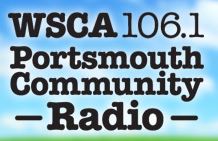
On November 3, 2013, my trio -- with John Hunter on bass and PJ Donahue on drums, did a live performance on WSCA public radio in Portsmouth, NH, as part of their Music Maration fundraiser. Here's the audio from that session: 02/23/2014 Sunday Brunch Delight 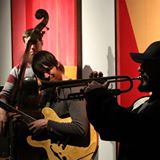
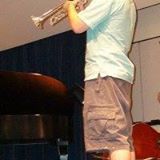
I really enjoyed listening to Chris Klaxton and Jimmy Clark at Rudi's in Portsmouth this morning. Two trumpet players -- but, no, it was not a trumpet duo. Chris was on piano, Jimmy on upright bass. Beautiful music. Just goes to show that musicianship is what matters, not the instrument that happens to be in the musician's hands at the moment. I've heard a lot of piano players play that piano, but Chris got the most beautiful sound I've ever heard come out of it. I loved Chris's voicing, his laid back swing, and his tasty lines. Jimmy listened intently, reacted musically, played great support and thoughtful solos, as he always does. A superb duo. Nice selection of tunes. I made a note of a few of the tunes: Alfie Cheek to cheek (C) Candle in the Wind(?) James Someone to Watch Over Me (Ab) Whisper Not (Cm) Tangerine Star Eyes Blackbird Moonglow 01/25/2014 Talent 

Denise Levertov. The Poet in the World It has been said that talent is of no use without character. I don't know if I agree--it depends on what is meant by character. But I do know talent is efferv≠escent, and easily corrupted without a sense of respon≠sibility to craft, of art as a power to which talent may be dedicated and which demands of its votaries something more than to be used by them for the relief of moods. [italics in original] p. 177 1/24/2014 Why Music This is going around on Facebook. Worth sharing. 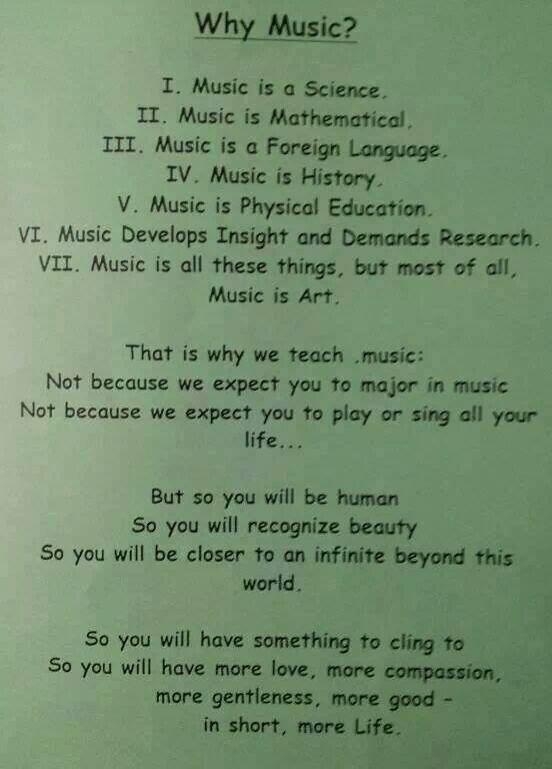
1/1/2014 Chord Scale Analysis vs Harmonic Analysis I made a video that demonstrates some concepts of chord-scal analysis, and how that differs from harmonic analysis. I'll be exploring this more in future videos. |





